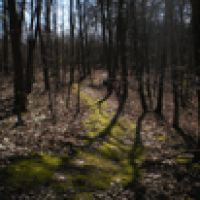Graham & Lin, 2012
The Hydropedograph toolbox.
Graham, C., and H. Lin (2012)
2nd International Conference on Hydropedology, Leipzig, Germany, July 22-27, 2012.
-
Shale Hills, INVESTIGATOR
-
IML, Shale Hills, INVESTIGATOR
Abstract
Soil moisture is a key component of the terrestrial water balance, and the temporal patterns of soil moisture response to precipitation is a key control on stream-flow, vegetation viability and distribution, landslide frequency and distribution, contaminant transport, soil weathering, and other soil hydropedological processes. However, the temporal patterns of soil moisture response to precipitation and evapotranspiration remain difficult to predict. While more researchers have included soil moisture monitoring networks of greater and greater duration and extent in their hydrological process investigations, we believe that this data has been underutilized in hydrological science. While the field of catchment hydrology has wrung every bit of data possible from time series of stream discharge (i.e. recession analyses, flow duration curves, wavelet and other statistical analyses, etc. . . ), soil scientists have been slower in developing the tools needed to fully interrogate soil moisture time series.
In this presentation we demonstrate a Matlab based toolbox for analysis of time series of soil moisture profiles. We have identified six core components of soil moisture analysis: 1) time series statistics, 2) moisture release curves, 3) soil physical properties, 4) preferential flow, 5) diel signals in soil moisture and 6) soil moisture and temperature relationships. We acknowledge the toolbox is not exhaustive, and envision it to be an open source document allowing for continuing expansion and incorporation of new methods and procedures. It currently incorporates the key analyses performed in our work analyzing the soil moisture temporal and spatial patterns at the Shale Hills Critical Zone Observatory (SH CZO), and we follow description of the toolbox with a case study from soil moisture measurements taken at the SH CZO.
Citation
Graham, C., and H. Lin (2012): The Hydropedograph toolbox. 2nd International Conference on Hydropedology, Leipzig, Germany, July 22-27, 2012..
 This Paper/Book acknowledges NSF CZO grant support.
This Paper/Book acknowledges NSF CZO grant support.
Explore Further


